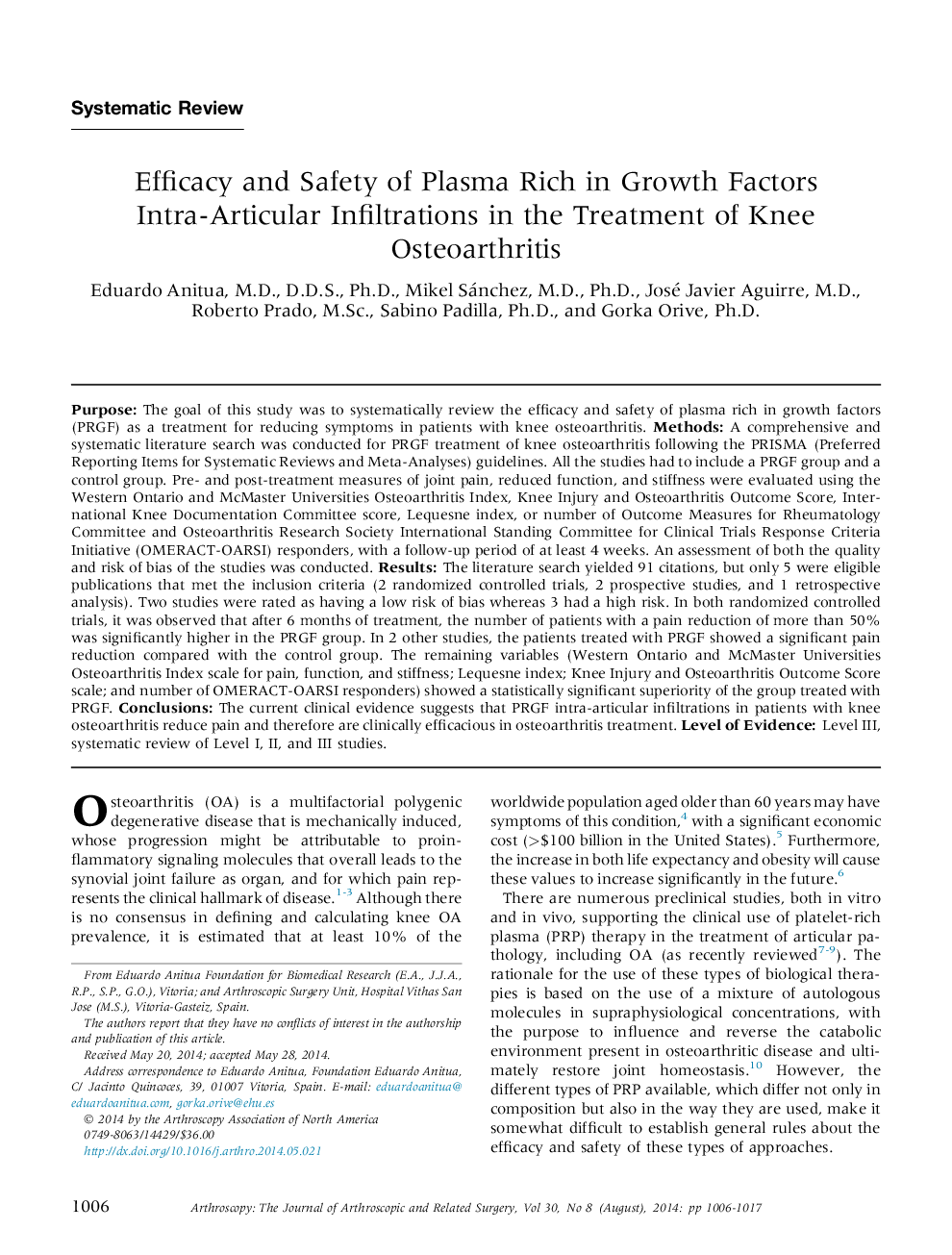| Article ID | Journal | Published Year | Pages | File Type |
|---|---|---|---|---|
| 4043021 | Arthroscopy: The Journal of Arthroscopic & Related Surgery | 2014 | 12 Pages |
PurposeThe goal of this study was to systematically review the efficacy and safety of plasma rich in growth factors (PRGF) as a treatment for reducing symptoms in patients with knee osteoarthritis.MethodsA comprehensive and systematic literature search was conducted for PRGF treatment of knee osteoarthritis following the PRISMA (Preferred Reporting Items for Systematic Reviews and Meta-Analyses) guidelines. All the studies had to include a PRGF group and a control group. Pre- and post-treatment measures of joint pain, reduced function, and stiffness were evaluated using the Western Ontario and McMaster Universities Osteoarthritis Index, Knee Injury and Osteoarthritis Outcome Score, International Knee Documentation Committee score, Lequesne index, or number of Outcome Measures for Rheumatology Committee and Osteoarthritis Research Society International Standing Committee for Clinical Trials Response Criteria Initiative (OMERACT-OARSI) responders, with a follow-up period of at least 4 weeks. An assessment of both the quality and risk of bias of the studies was conducted.ResultsThe literature search yielded 91 citations, but only 5 were eligible publications that met the inclusion criteria (2 randomized controlled trials, 2 prospective studies, and 1 retrospective analysis). Two studies were rated as having a low risk of bias whereas 3 had a high risk. In both randomized controlled trials, it was observed that after 6 months of treatment, the number of patients with a pain reduction of more than 50% was significantly higher in the PRGF group. In 2 other studies, the patients treated with PRGF showed a significant pain reduction compared with the control group. The remaining variables (Western Ontario and McMaster Universities Osteoarthritis Index scale for pain, function, and stiffness; Lequesne index; Knee Injury and Osteoarthritis Outcome Score scale; and number of OMERACT-OARSI responders) showed a statistically significant superiority of the group treated with PRGF.ConclusionsThe current clinical evidence suggests that PRGF intra-articular infiltrations in patients with knee osteoarthritis reduce pain and therefore are clinically efficacious in osteoarthritis treatment.Level of EvidenceLevel III, systematic review of Level I, II, and III studies.
